
Playing with yokai using Apple Intelligence | What were the results of a "yokai shop experiment" using the iPhone 16's AI functions?
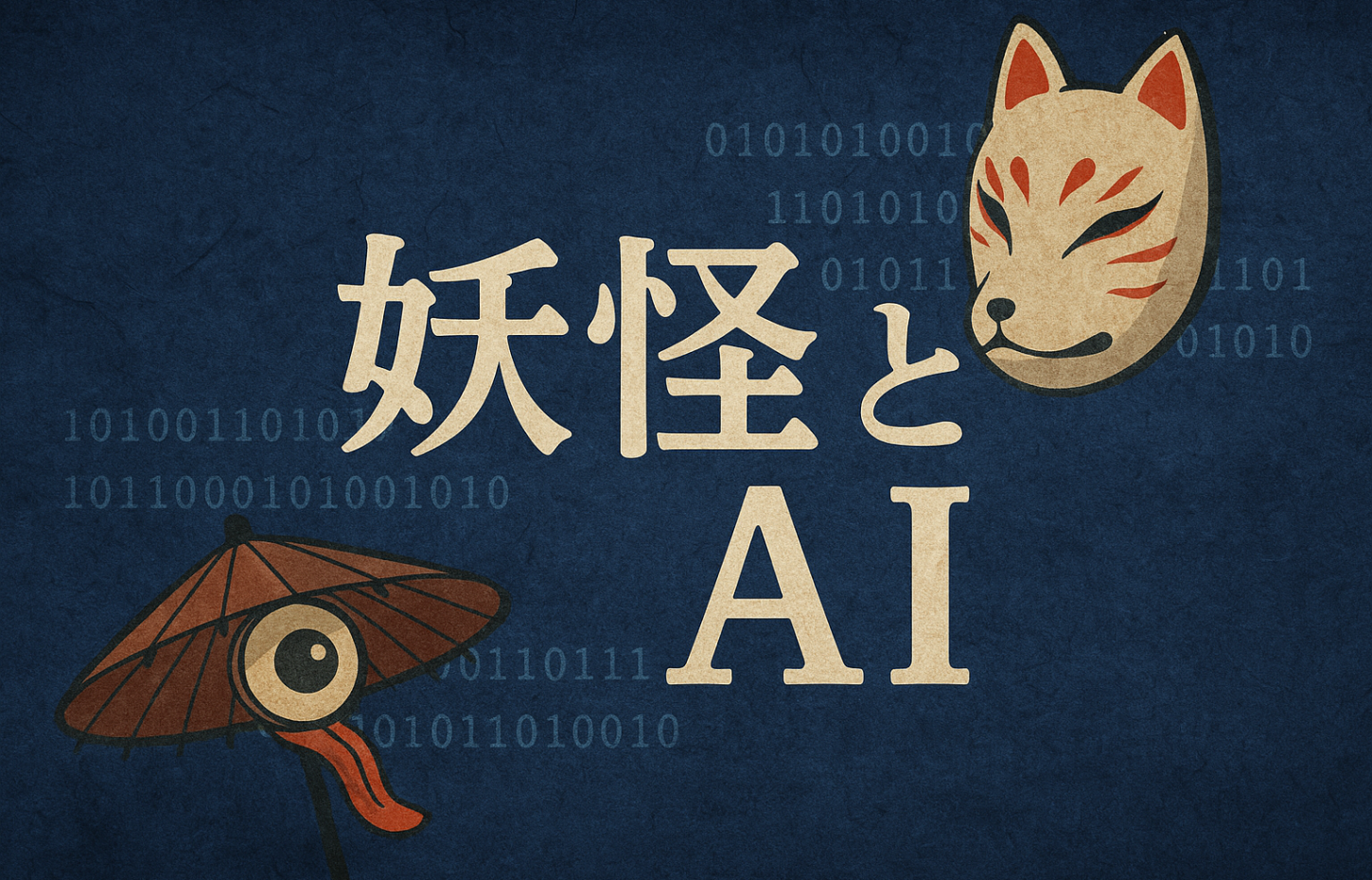
A mysterious encounter between the iPhone 16 and a yokai
I just got my hands on the iPhone 16 in Marunouchi. The highlight is the much talked about "Apple Intelligence." With integration with ChatGPT, Genmoji, Writing Tools, and more, AI is said to make everyday life much more convenient and fun.
Well then, as a Yokai shop, let's give it a try right away. This time, we explored the possibilities of "Yokai x AI" with the following three functions.
① Visual Intelligence × Yokai Identification
First, there's the image analysis function using the AI camera. Just point the camera at the subject and information about it will automatically be displayed. I was a little skeptical, but when I pointed my iPhone lens at the monster figures lined up in my house, I was surprised by what I saw.
🧿 Shirime
"This is a unique figurine that imitates the Japanese monster, Shirime." Who would have thought that an AI could provide such accurate annotations for a monster with the unusual characteristic of having eyes on its buttocks?
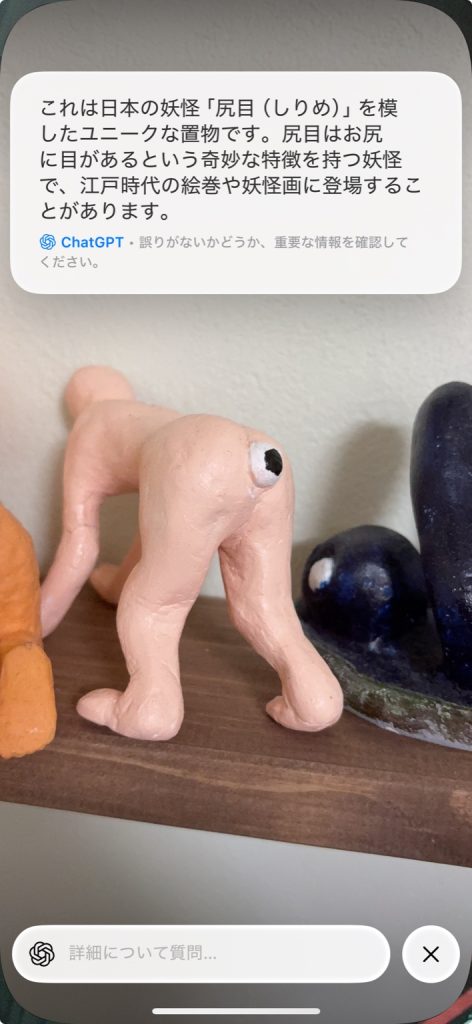
☺️ Faceless
"A monster with no distinctive features in its face, with a flat appearance that scares people" - a very safe and accurate answer. It's hard to describe in terms of its appearance, so I'm impressed that they managed to identify it as a monster. It's a bit disappointing, though, as "Nuppeppo (Nuppefuhofu)" would have been perfect.
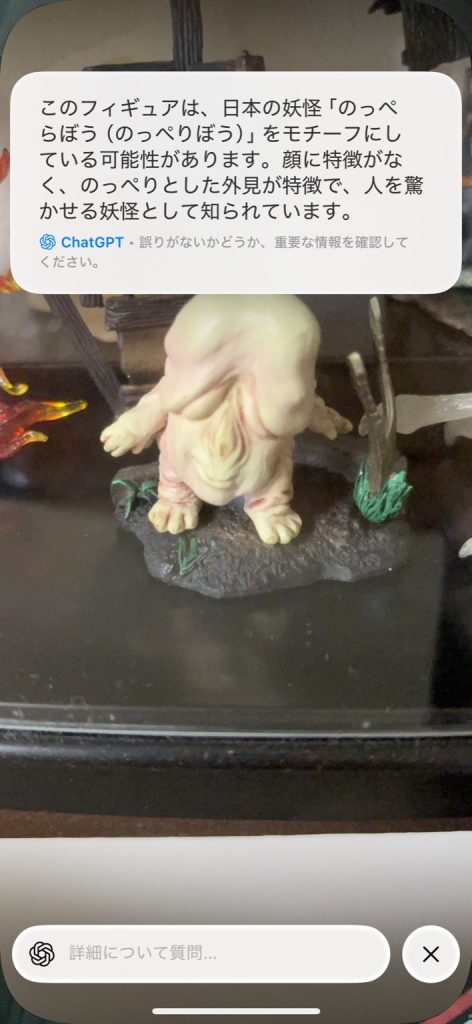
🐺 Shisa
He even mentioned "the traditional guardian deity of Okinawa" and explained the meaning behind the opening and closing of its mouth. It's more of a folkloric object than a monster, but the way he explained it while keeping in mind the difference shows how well-educated the AI is.
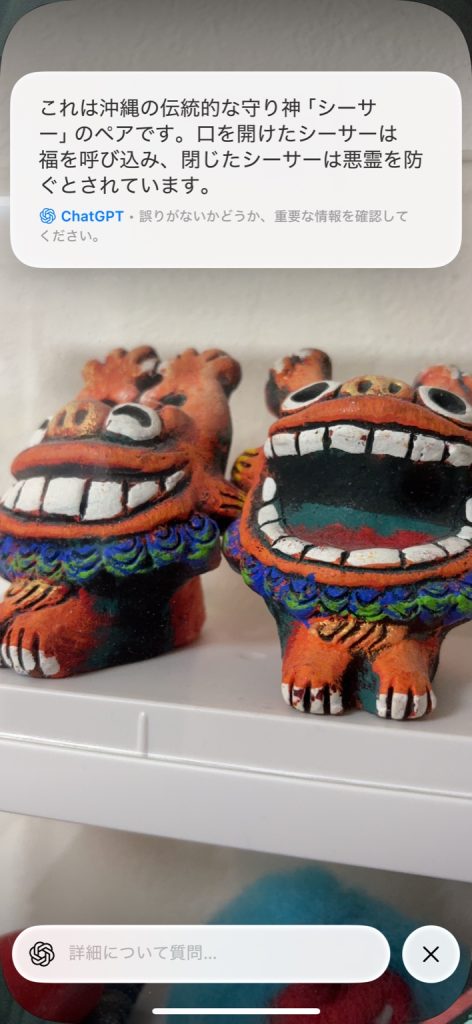
Overall: The AI's visual recognition is quite accurate. Rather than making mistakes, I was impressed by the sense of culturally determining whether something is a yokai or not. This is at a level where you could really play a "yokai hunting game."
② Genmoji × Yokai Transformation
Next up is "Genmoji," a function that can generate original emojis based on a photo of your face or input. This time, we tried generating four types of emojis: kappa, tengu, ghost, and oni. So, what kind of monsters will the AI draw?
🐸 Kappa
What came out was a cute green creature. It had no plate-like thing on its head, and no beak. It gave the impression of being more of a waterside mascot. It lacked the realism of a yokai, but it was extremely charming.
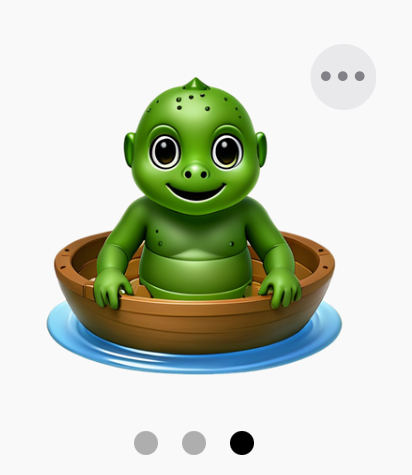
🗣️ Tengu
This one appears with an angry face like a red demon. As a yokai fan, I was a little disappointed that he doesn't have the long nose that is the symbol of Tengu. His angry face and horns make him seem more like an "oni" (or rather, a demon).
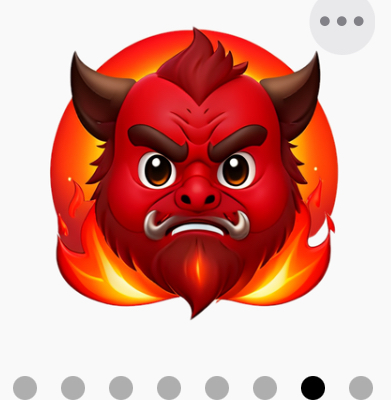
👻 Ghost
White and fluffy. This is a ghost. It looks like a Western-style ghost, but it has something in common with the "spirit of the dead," so it's a convincing representation. This is the most "ghost-like" of the works we've done so far.
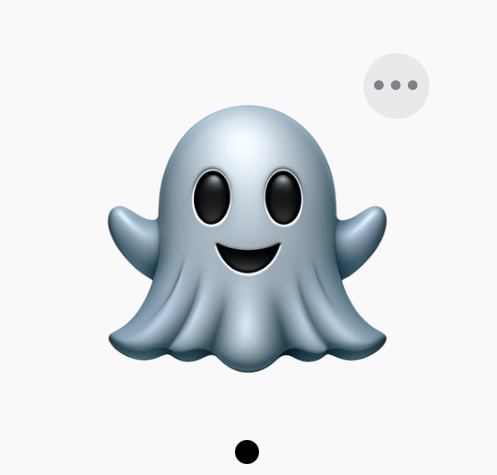
🐺 Demon (?)
What appeared was a wolf-like beast with bared fangs, and no matter how you look at it, it is not a "Japanese demon." If anything, it gives the impression of a werewolf or a horror character from overseas, and the reproduction of a yokai is not very good.
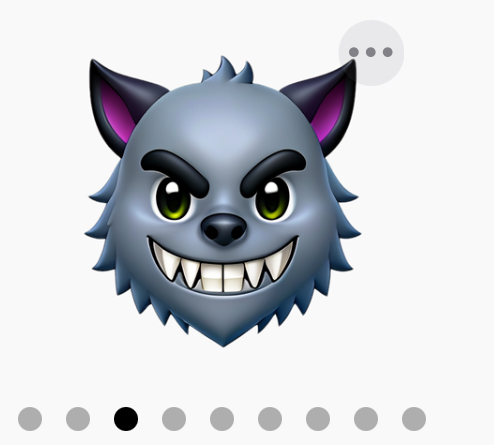
Overall: Genmoji is still in the process of generating yokai. In particular, it needs to fine-tune the information to accurately reflect "Japan's unique yokai culture," but there is room for fun, including the "discrepancies."
③ Writing Tools × Yokai Storytelling
Finally, there is the text creation function. This time, I had the AI read a short story I prepared in the style of a folk tale, "Shadows Sheltering from the Rain," and specified that it should be written in a "cheerful and friendly tone."
Then, the narrative style changed all at once. The gentle narration changed to a gentle tone, as if one was telling a story to a friend. The story development remained the same, but the language and rhythm had changed to a light, modern read.
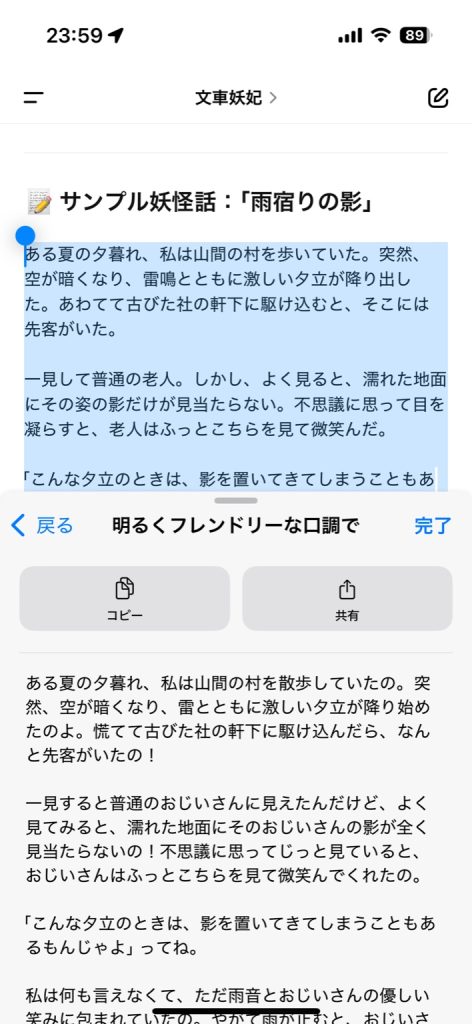
Overall: Writing Tools is extremely useful for "retelling" yokai stories. Because the style can be freely adjusted to suit the target audience, be it folk tales, modern language, or children's language, it seems like it could also be used to pass on yokai culture.
Conclusion: AI and Yokai are still interesting
Apple Intelligence was surprisingly flexible in dealing with the vague and fantastical existence of a yokai. It's not perfect, but that discrepancy is rather fascinating.
The yokai seen through the eyes of AI are somehow new, a little mysterious, and a little humorous. Experiments exploring the possibilities of "yokai x technology" will continue.


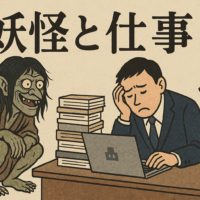
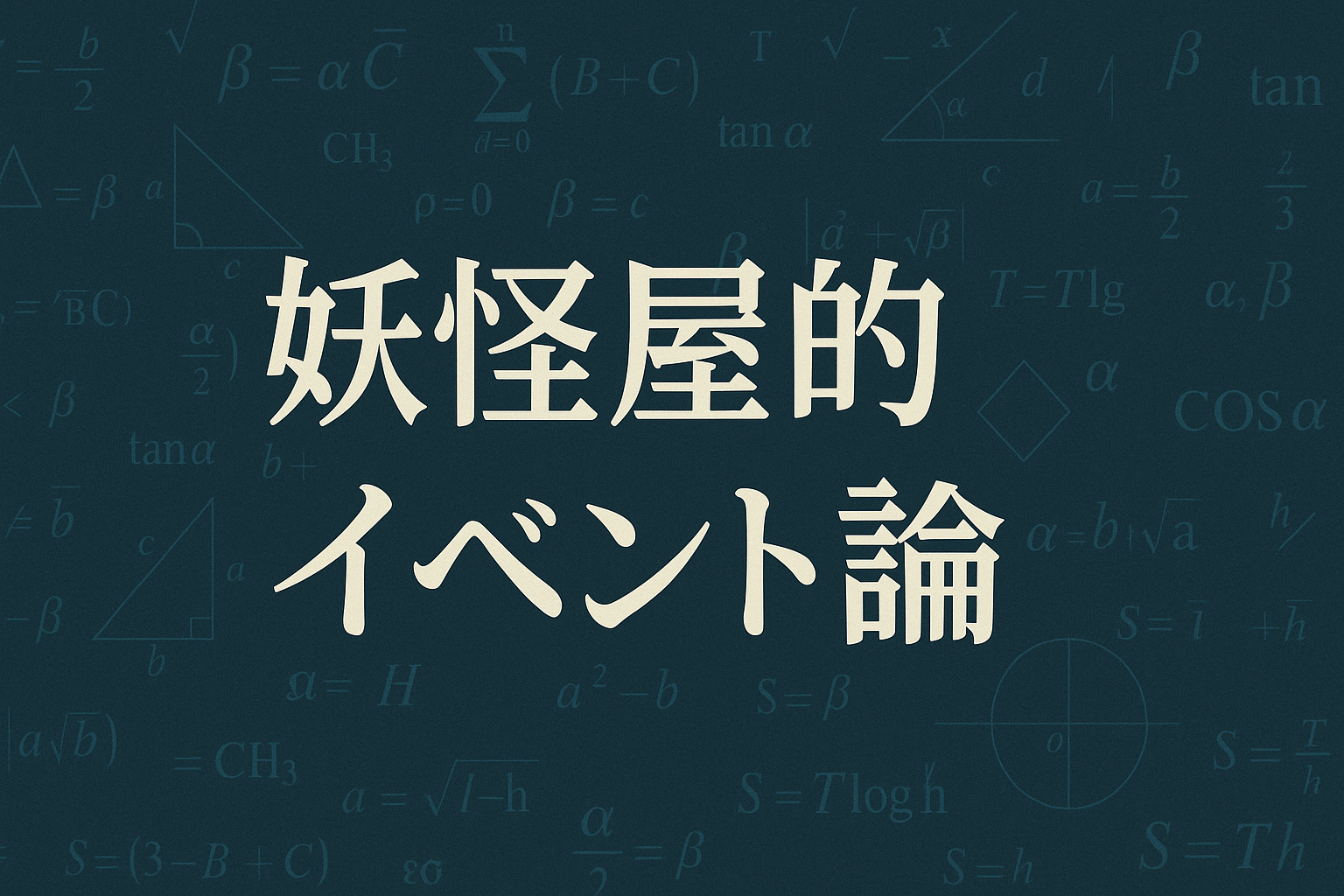



No comments yet.